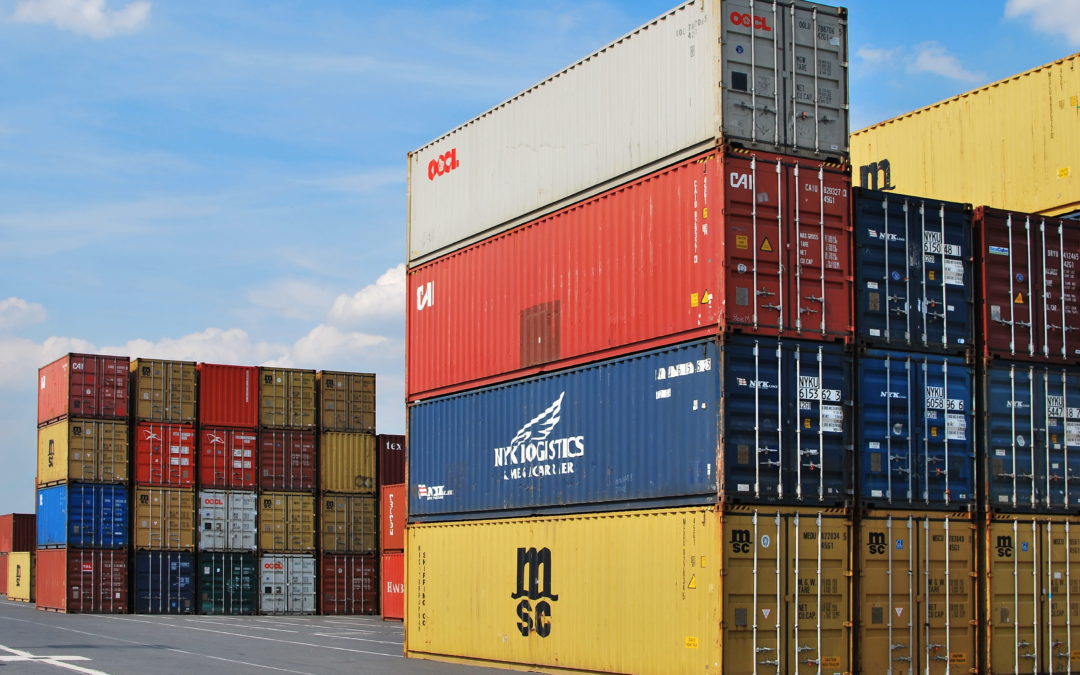Poland could gain up to $8.3 billion each year as global value chains shift away from China amid the coronavirus pandemic, according to a new report by the Polish Economic Institute (PIE), a public think tank.
Global merchandise trade will drop by 13-32% in 2020, according to predictions by the World Trade Organisation (WTO). As a result, trade may become more regionalised and protectionism may increase, leading to a diminished role for China in global value chains, argues PIE.
Poland could be amongst the biggest European winners in this shift, assuming a best-case scenario of increased domestic production of intermediate products as well as a larger role of eastern EU member states in producing goods for the entire bloc, finds the report.
In absolute terms, other notable beneficiaries include Germany ($8.3 bln), France ($4.4 bln) and Italy ($3.3 bln), as well as a CEE countries with large manufacturing sectors, such as the Czech Republic ($4.9 bln), Hungary ($2.7 bln) and Romania ($2.6 bln), according to PIE’s calculations.
In terms of relative benefits, countries with the most international trade links would see the greatest windfall, including Slovakia (2.84% increase in value added), Czech Republic (2.75% increase) and Hungary (2.36% increase), as well as Poland (1.87% increase).
The relative boost would not be as great for larger Western economies. Among them, Germany (0.26% increase) and Austria (0.27% increase) are predicted to have the largest proportional rise in value added.
Jak wynika z raportu @PIE_NET_PL “Szlaki handlowe po pandemii #COVIDー19”, Polska może zyskać ponad 8 mld USD rocznie dzięki delokalizacji produkcji z Chin, a PKB Państwa Środka mógłby zmniejszyć się nawet o 1,64 proc.
Zapraszamy do lektury raportu: https://t.co/DuxyPd6eNQ pic.twitter.com/KTDKeMBSH2
— Polski Instytut Ekonomiczny (@PIE_NET_PL) May 19, 2020
“The potential and condition of sectors most involved in global value chains, and therefore most susceptible to their reorientation, will be especially important, including: computer hardware, electronics and optics, electrical equipment, automotive and pharmaceuticals,” says the PIE report.
However, to seize the opportunities of the global reshuffle, Poland will have to boost its economic competitiveness relative to other countries in the region, which will include infrastructural investments and leveraging its network of subcontractors.
The report also lists Poland’s geographic location, economic clout, membership of the EU and quality of the domestic labour force as other key assets. Obstacles may include rising labour costs and lower accessibility of skilled workers.
Experts often point out that, while Poland has a number of factors that have drawn investors (helping it rank third for new foreign investment projects in Europe last year), it also faces a number of obstacles as it seeks new investments with higher valued added. These include underdeveloped infrastructure, lack of green energy, and politicisation of the court system.
On a similar note, in a recent insight article for Notes from Poland, Marcin Czaplicki, an economist at Poland’s largest bank PKO BP, argued that “the break in supply chains at the beginning of the epidemic in China demonstrated how important it is to diversify it by distributing production in various regions.” He wrote that:
[Poland] still ha[s] large reserves in the form of high employment in agriculture. This structural weakness of the Polish economy has become an asset, if we realise that workers leaving the least efficient sector, agriculture, almost immediately increase their productivity. Similar effects come from training staff, especially considering the decent level of primary and secondary education provided in Poland.
“Poland, with its high productivity, has become more competitive compared to other countries in the CEE region. As recent years have shown, this is a key factor attracting investment,’ according to Czaplicki. “The second factor is an active trade policy and encouraging companies – even now – to come to Poland.”
In late February, before Poland had recorded its first confirmed coronavirus case, the country’s development minister, Jadwiga Emilewicz, said that the Polish economy could actually benefit from the crisis, because its businesses do not have production parks outsourced to China. She revealed that she had been approached by American investors seeking replacement suppliers in Poland.
“They are seeking new suppliers very quickly, who will be able to speedily deliver good quality products in large volumes,” added Emilewicz. She later, however, apologised for any offence caused by the suggestion that Poland could benefit from a pandemic.
Forecasts by the European Commission indicate that Poland will see the smallest decline in GDP this year among all EU member states, and will return to growth of 4.1% in 2021.
Poland will have the smallest relative economic decline among all EU member states this year, according to new @EU_Commission forecasts.
Poland's GDP is expected to contract by 4.3% in 2020 before growing 4.1% in 2021.
Via: https://t.co/uY28vZrLuc pic.twitter.com/jY3x1En3ei
— Notes from Poland 🇵🇱 (@notesfrompoland) May 6, 2020
Main image credits: Tomasz Przywecki/Flickr (under CC BY-NC-ND 2.0)

Maria Wilczek is deputy editor of Notes from Poland. She is a regular writer for The Times, The Economist and Al Jazeera English, and has also featured in Foreign Policy, Politico Europe, The Spectator and Gazeta Wyborcza.




















